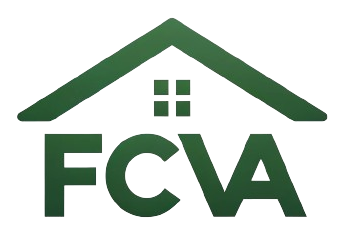What to Do With Pantry Items: 7 Donation and Storage Tips
Have you ever looked into your pantry and felt a wave of confusion wash over you? It’s easy for our pantries to become cluttered, filled with items we don’t use, need, or even remember buying. What should we do with all those extra pantry items? Whether we want to donate them to those in need or simply find better ways to store them, we’re here to share some helpful insights.
Understanding the Importance of Pantry Management
Managing our pantry items isn’t just about keeping things tidy; it’s about making the most of our resources. By taking stock of what we have and putting unnecessary items to good use, we can contribute to our communities while keeping our kitchens orderly.
Donation Tip #1: Know What’s Usable
When considering donations, it’s crucial for us to first assess what we have on hand. We should only donate items that are still safe to eat and have not reached their expiration dates. Non-perishable goods like canned goods, boxed meals, and dry pasta are ideal candidates. Remember, we want to help others, so giving them what we would want to receive is key.
Donation Tip #2: Find Local Food Banks
Once we’ve identified the items we’d like to donate, the next step is to find a local food bank or charity. Many organizations will gladly accept our non-perishable food items. We might be surprised by just how many options we have: churches, community centers, and even schools often run food drives. A quick online search can help us find places nearby that accept donations.
| Organization Type | How to Locate |
|---|---|
| Local Food Banks | Check websites like Feeding America or FoodPantries.org |
| Community Centers | Visit their official websites or call them directly |
| Churches or Religious Groups | Many have a dedicated outreach program |
| Schools | Check for food drives during the school year |
Donation Tip #3: Coordinate Donation Drives
If we find ourselves with a mountain of pantry items, it might be worth coordinating a donation drive. This is particularly effective during the holiday season, but can be done at any time of year. We can rally our friends, family, and neighbors to contribute. Not only does this maximize our reach to help those in need, but it can also create a sense of community and shared purpose.
Donation Tip #4: Reach Out to Shelters
Apart from food banks, local shelters often seek pantry items as well, particularly items that are easy to prepare. Whether it’s a women’s shelter, a homeless shelter, or a youth center, reaching out to them can help us understand their specific needs. They might welcome canned soups, stews, or ready-to-eat meals that can be immediately useful.
Storage Tip #1: Categorize Your Items
As we work on refining our pantry, categorization can be our best friend. By grouping items together—such as spices, canned goods, grains, and snacks—we can easily find what we need when we need it. This not only streamlines our cooking process but also helps us remember what we have on hand, reducing food waste.
Storage Tip #2: Use Clear Containers
Investing in clear storage containers is one of the simplest yet most effective ways to organize our pantry. Not only do they look aesthetically pleasing, but they also allow us to easily see what’s inside. By labeling these containers, we can make it even simpler to keep track of inventory. For instance, when we see a jar labeled “rice,” we know where to look when it’s time to prepare a meal.
| Container Type | Ideal Use | Benefits |
|---|---|---|
| Glass Jars | Grains, pasta, snacks | Airtight seal, visibility |
| Baskets | Produce, miscellaneous items | Easy to pull out, good for larger items |
| Plastic Bins | Canned goods, dry goods | Durable, stackable, lightweight |
Storage Tip #3: Use the FIFO Method
The FIFO (First In, First Out) method is a smart approach to pantry management. By placing newer items behind older ones, we can ensure that nothing goes to waste. This is especially useful for items that have longer shelf lives but need to be rotated more frequently, like canned goods or baking supplies.
Storage Tip #4: Consider a Regular Inventory Check
It’s wise for us to conduct a pantry inventory check every few months. This doesn’t have to be a daunting task—just a quick review to see what’s been used up and what needs to be consumed soon. By keeping track of our pantry items in this way, we can significantly reduce food waste and improve our meal planning.
Storage Tip #5: Be Mindful of Temperature and Humidity
Our pantry’s environment can greatly affect the longevity of our food items. Keeping it cool and dry will help ensure that perishables last longer. If we live in a humid area, investing in moisture-absorbing packets can be beneficial. Additionally, we should avoid storing food items near heat sources like ovens or dishwashers, as those can accelerate spoilage.
Conclusion: Creating a Pantry We’re Proud Of
When we take the time to sort through our pantry items, decide what to donate, and implement better storage practices, we create a space that not only serves our culinary needs but also contributes positively to our communities. By sharing excess food, we support neighbors in need, and by organizing our pantry, we enhance our cooking experience. Remember, we’re in this together, and with these tips, we can create a functional pantry that brings us joy and satisfaction.
No matter how large or small our pantry may be, using our time and resources wisely will pay off in the long run. So let’s gather those items we no longer need and make a difference today!
Ready to sell your house fast in Virginia? FastCashVA makes it simple, fast, and hassle-free.
Get your cash offer now or contact us today to learn how we can help you sell your house as-is for cash!
Disclosure: As an Amazon Associate, I earn from qualifying purchases.



